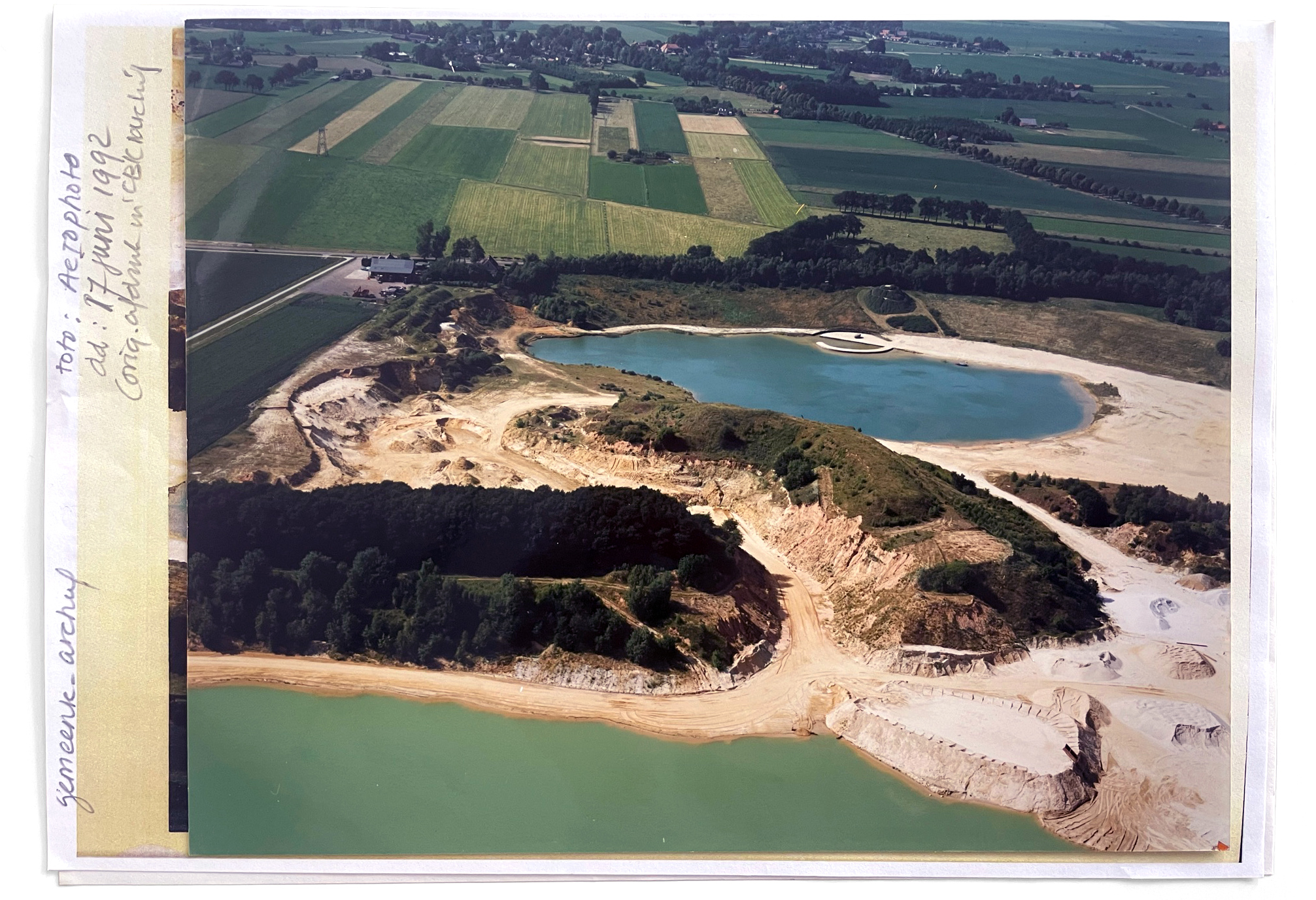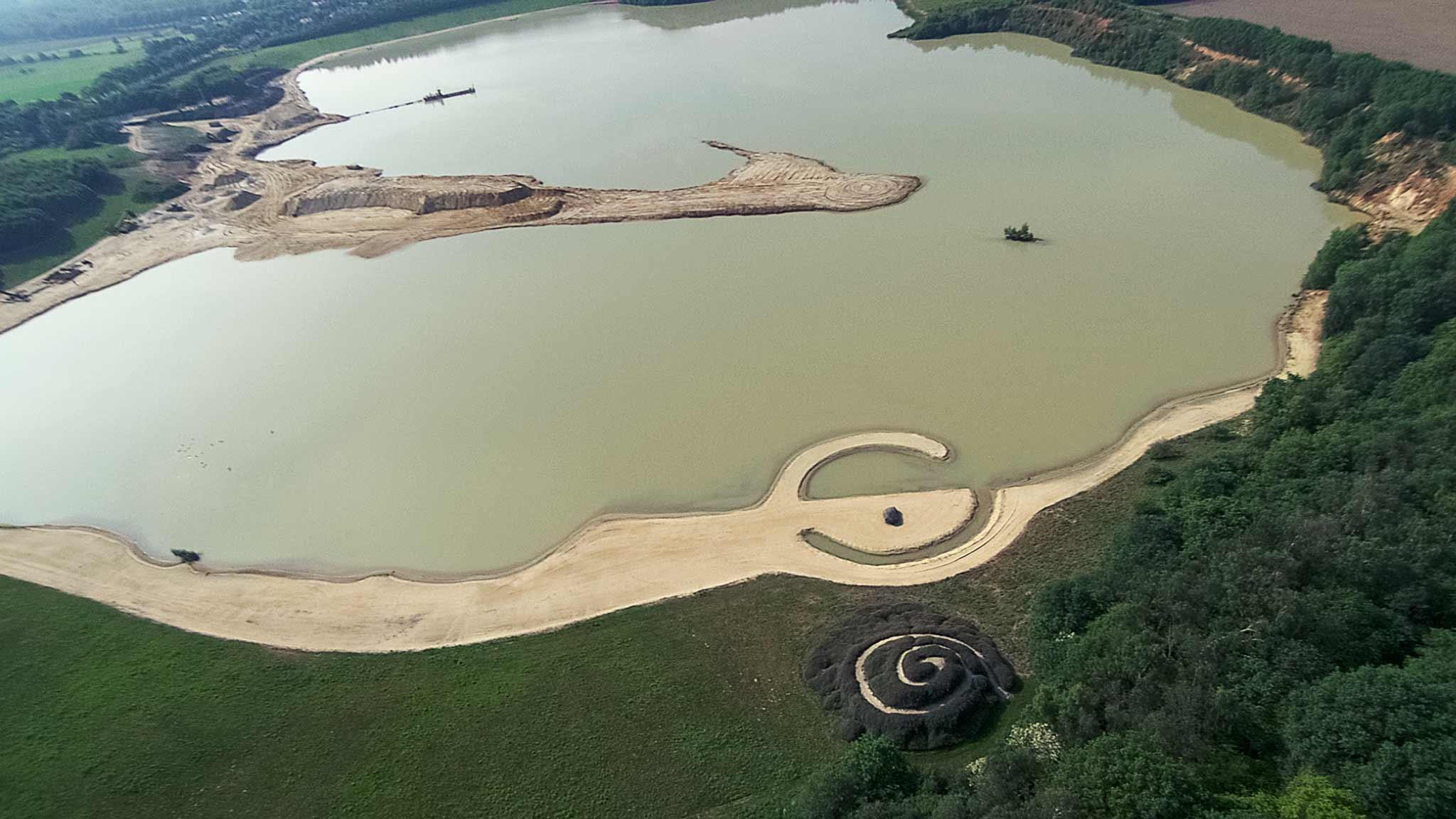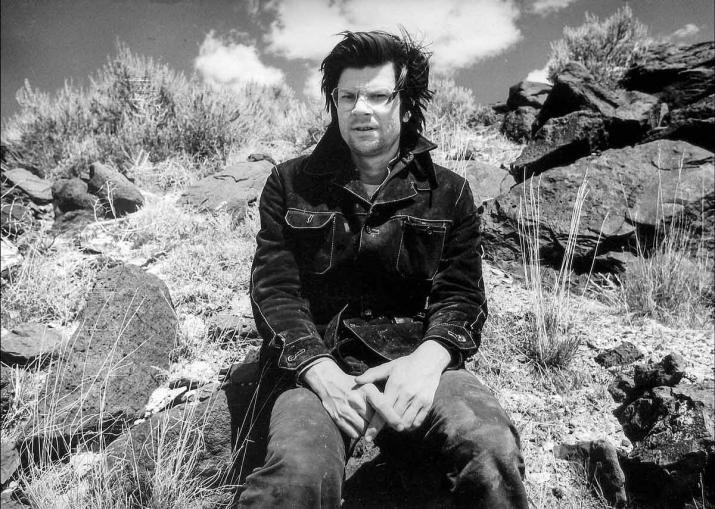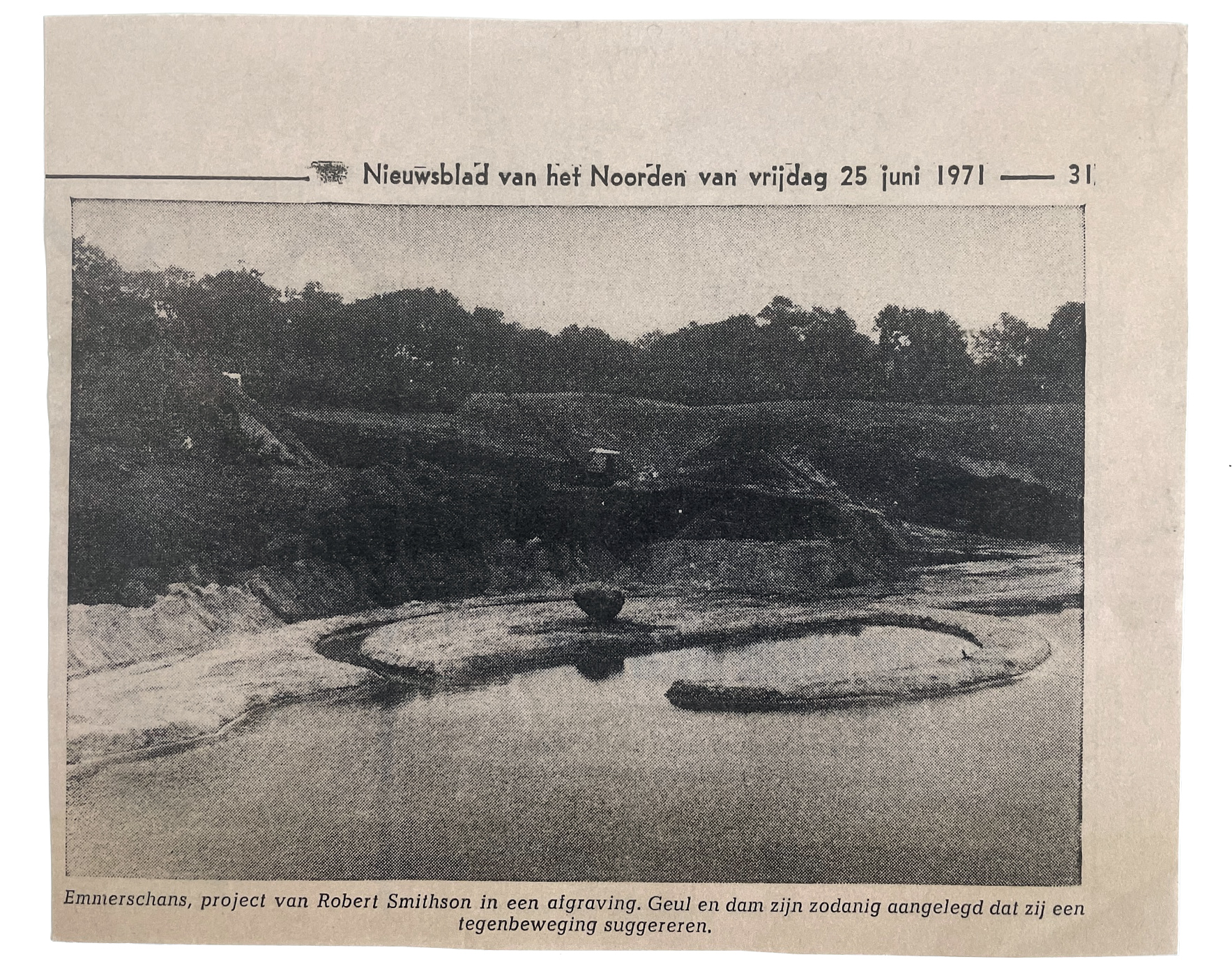
Foto: Aerophoto (17 Juni 1992)
LEARN
The artwork Broken Circle/Spiral Hill by American artist Robert Smithson was created in 1971 especially for the now legendary Sonsbeek Buiten de Perken exhibition in an active sand quarry just outside Emmen. It is Robert Smithson's only earthwork outside of the United States.

Filmstill from "Nancy Holt and Robert Smithson, Breaking Ground: Broken Circle/Spiral Hill (1971-2011)"
Filmimages: Nancy Holt (1971), Benito Strangio (2011)
Broken Circle/Spiral Hill
Broken Circle/Spiral Hill (1971) is located in Emmen, in the province of Drenthe. Commissioned for the 1971 edition of the recurring outdoor exhibition Sonsbeek, it is his only earthwork outside the United States.
Broken Circle/Spiral Hill is sited in a former sand-mine, cut into the side of a terminal moraine. It is an artwork of two parts. Broken Circle is a semi-circular jetty built into the quarry lake, filled with reflecting green water. Spiral Hill rises into a cone-shaped hill beside the lake. A spiraling path leads to the top, from where the quarry and Broken Circle can be seen from above. At the center is an immovable huge boulder deposited by the ancient glacial movements.
Smithson described this as “a major piece” and it sparked his interest in working with industry and post-industrial landscape to make art “a necessary part of their reclamation projects.” The geological and industrial history of the Drenthe region drew Smithson to Emmen. He was fascinated by the constructed landscape of The Netherlands. Smithson was interested in “landscapes that suggest prehistory. As an artist it is sort of interesting to take on the persona of a geological agent where man actually becomes part of that process rather than overcoming it.” Smithson was committed to working with landscapes scarred by industry, thinking through future uses for exhausted landscapes.
Robert Smithson

Robert Smithson at Spiral Jetty. Photo: Unknown, ca. 1970
Robert Smithson (1938-73) was a visionary artist who expanded what art could be and where it could be found. For over fifty years his work, writings, and ideas have influenced artists and thinkers, building the ground from which contemporary art has grown.
Smithson is best known for his earthworks Spiral Jetty (1970, Great Salt Lake, Utah), Broken Circle/Spiral Hill (1971, Emmen), and Amarillo Ramp (1973, Amarillo, Texas). His interests moved through travel, cartography, geology, architectural ruins, prehistory, philosophy, science fiction, popular culture, and language.
In his short and prolific life, Smithson produced paintings, drawings, sculpture, earthworks, architectural schemes, films and video, photographs and slideworks, writings, and all the stops between. Smithson raised questions about our place in the world, exploring the conceptual and physical boundaries of knowledge. From his landmark earthworks to his quasi-minimalist sculptures, Nonsites, writings, proposals, collages, detailed drawings and radical rethinking of landscape, Smithson's ideas are profoundly urgent for our times.
His works are held in museum collections around the world including Dia Art Foundation, New York; Museum of Modern Art, New York; National Gallery of Australia, Canberra; National Museum of Modern Art, Tokyo; Solomon R. Guggenheim Museum, New York; and the Whitney Museum of American Art, New York.
"Nature is never finished."
ROBERT SMITHSON
Past, present and future
Broken Circle/Spiral Hill is situated in a former sand quarry that is privately owned. It is a unique artwork with a rich history that resonates in the present, though its future remains uncertain.
Correspondence from Smithson suggests that he gifted the artwork to the Netherlands or the Dutch people. However, details regarding its maintenance and who holds responsibility for its care are missing. Since 1971, the generosity of the sand quarry owners has allowed Broken Circle/Spiral Hill to be visited and appreciated by local, national, and international audiences for five decades.
In 2023, Land Art Contemporary, commissioned by the Province of Drenthe, conducted a cultural-historical valuation of the artwork. In close collaboration with art historian Véronique Hoedemakers, Lydia Beerkens (conservator and director of SRAL), and Simone Vermaat, Berthe Jongejan, and Mieke van Bers from the Cultural Heritage Agency of the Netherlands, a comprehensive report was published, providing frameworks and recommendations for preserving the artwork.
For more than 45 years, Broken Circle/Spiral Hill lay in an active sand quarry operated by Zand- en Exploitatie Maatschappij, the De Boer family business, which played a key role in the creation and management of the artwork. Since 2019, the former sand quarry has had a new owner, with whom agreements were made to open Broken Circle/Spiral Hill to the public in 2021. In 2025, Land Art Contemporary, in collaboration with DIEP in Emmen, will organize a series of excursions across the four seasons. Land Art Contemporary and the Holt/Smithson Foundation aspire to collaborate with the current landowners to secure a sustainable future for Broken Circle/Spiral Hill so that it remains an inspiration for future generations over the next 50 years.
Partners
"Land Art Contemporary and the Holt/Smithson Foundation are working with various partners toward a sustainable future for this groundbreaking example of Land Art in the Netherlands. Broken Circle/Spiral Hill is one of the most significant examples of Land Art worldwide and the only permanent ‘earthwork’ by the artist outside the United States."
Lisa Le Feuvre, executive director Holt/Smithson Foundation, Anne Reenders, program director Land Art Contemporary.

Nieuwsblad van het Noorden. (Friday June 25, 1971)
Subscribe to our newsletter.
Holt/Smithson Foundation and Land Art Contemporary, in cooperation with different parties, are working towards a sustainable future for Broken Circle/Spiral Hill in Emmen, The Netherlands.
Activities related to Broken Circle/Spiral Hill are financially supported by:

All artworks and images by Nancy Holt and Robert Smithson are copyright Holt/Smithson Foundation, licensed by VAGA at ARS, New York.


